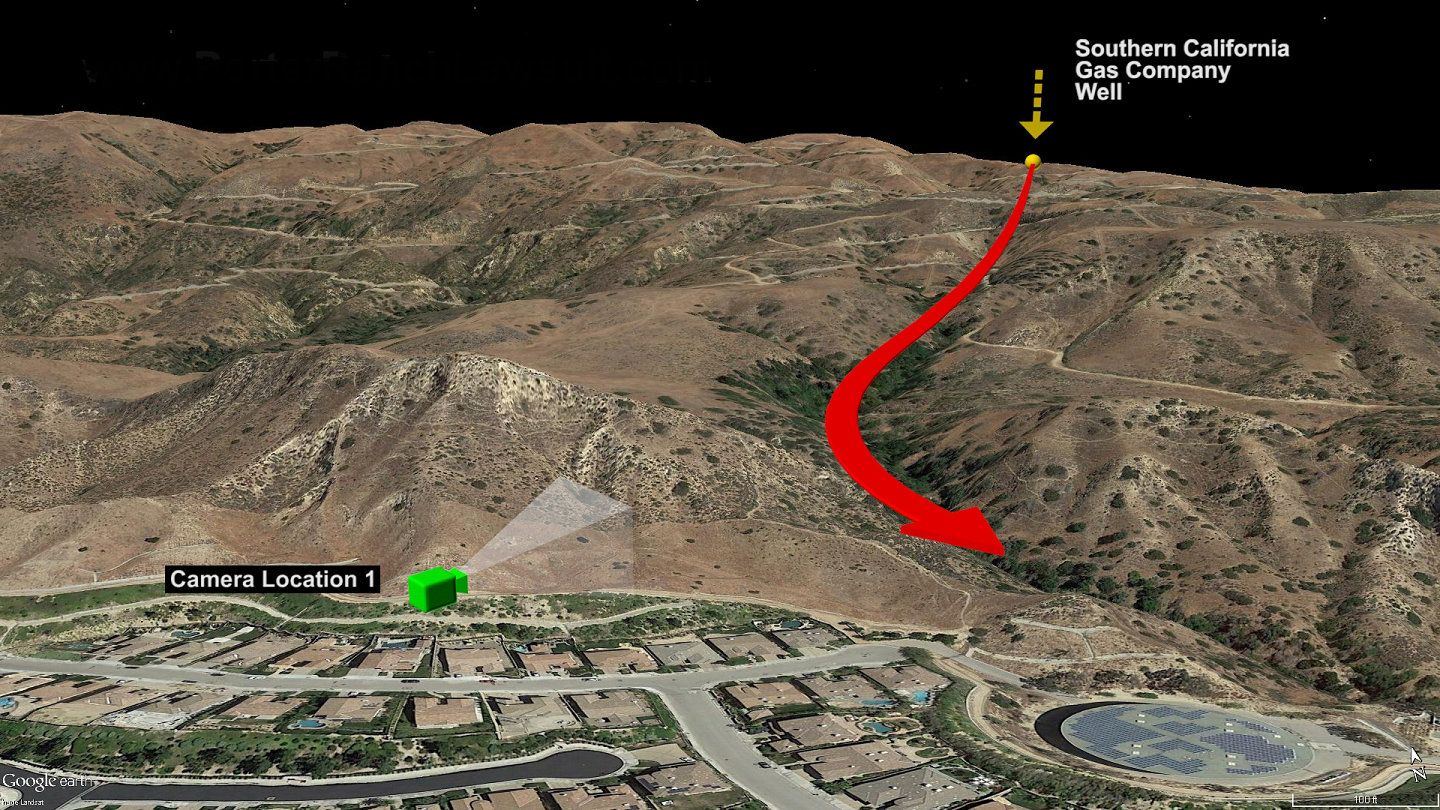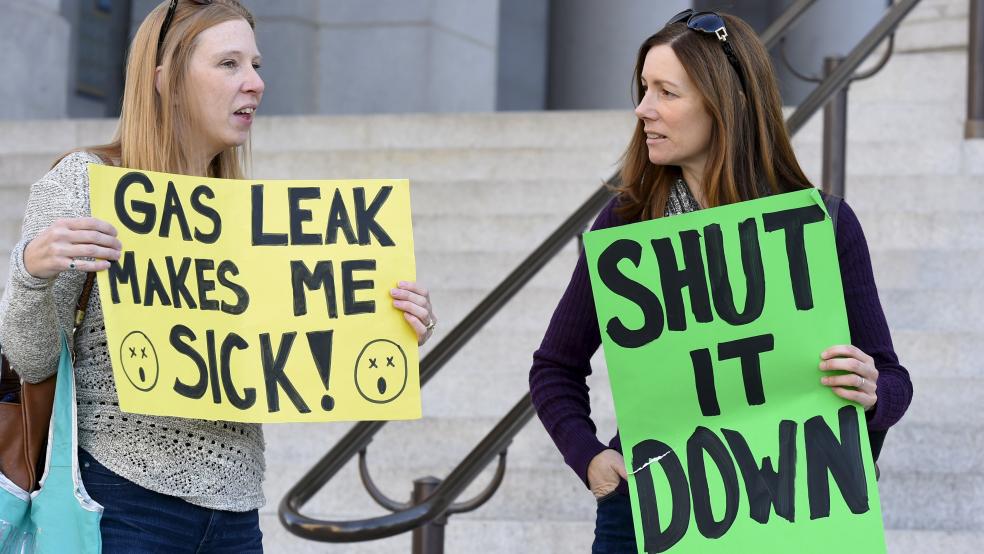Last summer, the state of Massachusetts made a troubling discovery: in just one Boston suburb—Medford—there had been 249 natural gas leaks, the oldest dating back to 1990.
The state’s gas pipeline system is among the oldest in the country, with some segments 157 years old. Roughly one third of the 21,000 miles of natural gas pipes running under the state’s cities, suburbs and rolling hills is outdated, and considered “leak-prone.”
Related: Did a Bad Decision 40 Years Ago Lead to the California Gas Leak Disaster?
Audrey Schulman, president of Home Energy Efficiency Team, which mapped the leaks statewide, told The Boston Globe that the leaks posed a major health and environmental hazard. “The leaks are potentially explosive, kill trees, harm human health, and release an extraordinarily destructive greenhouse gas,” Schulman said.
What’s more, these long-festering gas-leak problems in the Bay State are only a fraction of a much larger nationwide crisis spawned by the breakdowns decrepit pipelines and other infrastructure.
In 2011, 69 billion cubic feet of natural gas was released into the atmosphere, which was equal to the annual carbon dioxide emissions of about six million automobiles, according to an August 2013 congressional study. Yet the companies responsible for those leaks replaced only three percent of their cast iron or steel distribution mains the following year.
Last Wednesday, Gov. Jerry Brown of California declared a state of emergency and ordered new regulations – including enhanced inspections and safety measures – in response to a two-month old massive methane gas leak near Los Angeles. The huge leak of pungent smelling gas has so far displaced thousands of Porter Ranch residents and closed two schools. It now threatens to become one of the worst environmental catastrophes in the state’s history.
Related: Why the Gas Leak in California No One Is Talking About Is Such a Disaster
An aging underground gas storage facility ruptured on Oct. 23, sending noxious clouds of gas into the atmosphere, with no easy way for Southern California Gas Company crews to staunch the flow. They have drill 8,500 feet underground to get to the source of the leak without disturbing other pipes. Then fill the leak with cement.
The well is spewing about 30,000 kilograms of methane per hour, according to the state Air Resources Board, meaning that one of the worst forms of heat-trapping greenhouse gas is freely escaping into the atmosphere.
As of Dec. 22, the leaking well had released the equivalent of 1.6 million metric tons of carbon dioxide, according to the Los Angeles Times. That is more greenhouse gas emissions – a major cause of manmade global warming -- than 330,000 passenger vehicles generate in a year.
The Porter Ranch gas leak catastrophe may prove to be the worst U.S. environmental disaster since the BP oil spill in the Gulf of Mexico in 2010, as some environmentalists and scientists are warning. But there are many other gas leak crises waiting to happen, experts warn.

Crews work round the clock to try to stop the leak while angry residents have evacuated their homes and fear for their health.
The nation is rapidly switching from coal to natural gas to generate power. Cheap gas prices, the continuing decline of coal mining, and the expansion of fracking to tap into gas reserves are making natural gas the fuel of choice business and households alike.
Related: Obama’s Climate Summit Missed a Big Chance to Reduce Global Warming
All of this means that more and more pressure is being placed on aging pipelines and storage facilities that are prone to leaks and ruptures.
Tim O’Connor, director of the Environmental Defense Fund’s oil and gas program in California, said in an interview with MSNBC that while the Porter Ranch gas leak is a very significant problem, “it is also symptomatic of the need to upgrade our infrastructure and regulations in California and across the United States to prevent these things from happening.”
SoCal Gas has estimated it could take four months or longer to repair the Porter Ranch leak – which will involve the company building one or two relief wells to siphon off the gas. Even if the company manages to meet that deadline, the leak will put 10 million metric tons of carbon dioxide equivalent in the air, according to the EDF.
Last week, a SoCal Gas official acknowledged that the company nearly 40 years ago decided against replacing a defective cut-off valve that could have been used by crews in late October to staunch the flow of methane gas from the Porter Ranch underground containment facility. In short, a foolish cost cutting decision decades ago has exposed the company to potentially billions of dollars in damages and claims.
Related: Where The Top Six GOP Presidential Candidates Come Down on Climate Change
One of the reasons that SoCal and other gas companies have little incentive to replace leaky pipes and infrastructure – which span about 91,000 miles across 46 states – is because they are able to pass along the cost of lost gas to consumers.
Nationally, consumers paid at least $20 billion between 2000 and 2011 for gas that was unaccounted for and never used, according to a 2013 congressional study originally commissioned by Sen. Edward J. Markey (D-MA) while he was still in the House of Representatives.
“Natural gas has been touted as a cleaner alternative to coal for producing electricity, but its environmental benefits cannot be fully realized so long as distribution pipelines are leaking such enormous quantities of gas, which is primarily comprised of methane, a greenhouse gas that is at least 21 times more potent than carbon dioxide,” the report stated. “Americans also remain at risk from gas explosions and other safety hazards caused by leaky natural gas pipelines.”
Indeed, from 2002 to 2012, almost 800 significant incidents on gas distribution pipelines -- including several hundred explosions -- killed 116 people, injured 465 others and caused more than $800 million in property damage, according to the report.
Last April, a Department of Energy Quadrennial Energy Review (QER) recommended replacing the nation’s aging, leaky and dangerous gas pipeline infrastructure to save consumers money, prevent explosions and accidents and reduce leaking methane pollution.
Markey, a member of the Senate Energy and Commerce and Natural Resources Committees who has backed legislation along those lines, called the Energy Department report “the Olympics of America’s energy analysis, giving us a vital view of where we are and where we need to go to have the most affordable, stable, and sustainable energy system in the world,.”





